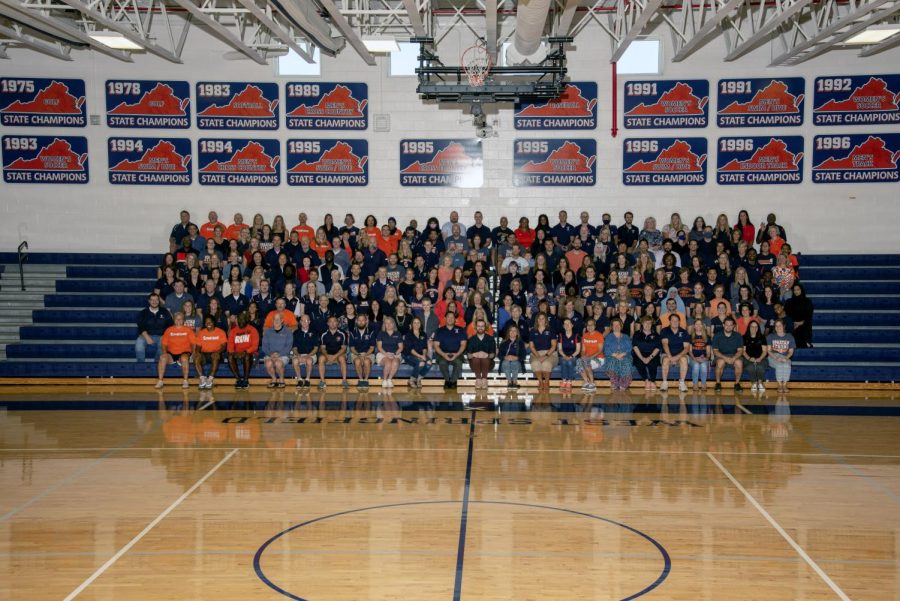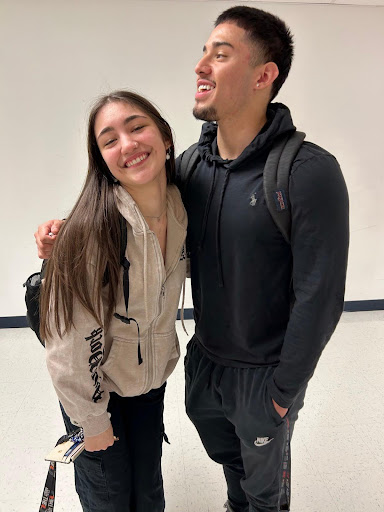Representation in staff matters
Photo courtesy of Melissa Morgan via Lifetouch
This is a photo of WS staff members for the 2022-2023 school year. There are teachers from various upbringings and states, but most have a common factor: their skin. Having an overwhelmingly White staff affects students of all colors in ways that the administration and staff must consider as significant.
Despite students coming from a multitude of backgrounds, Spartan staff is still overwhelmingly White. This underrepresentation has impacted students’ learning environments, causing their unique experiences to feel unseen.
“I would say [WS] has a good [student] diversity rate compared to other schools. Of course, it will always be predominantly White, but I feel as though there are a lot of students who have another classmate of the same race or nationality as them. I, myself, have never really interacted with Japanese people in public areas, but at WS there are two or three others,” said senior Jasper Bourne, who is Asian.
For students of color, having to appreciate the few people you see in your class of the same cultural background is a shared experience. Predominantly White schools and predominantly Black/Hispanic schools have complex histories due to redlining and racial views creating segregation in housing. This isn’t something that students or teachers can control, but it is a factor that affects the learning environment and overall community.
“I only have two non-White teachers this year, including my counselor, and given that our school is less than 50% White, I think that number should be higher,” said senior Maddie Orchard, who is White.
In the previous 2021-2022 school year, WS had 48.13% White students, 17.11% Hispanic students, 14.49% Asian students, 11.64% Black students, and 8.63% “other” students. Yet our teacher population demographics do not reflect the student body.
“I think not having diverse teachers hurts my education in the sense that I feel as though I’m missing out on the enrichment of learning from someone who’s coming from the same place as I am. And that’s not to say that the teachers at this school aren’t phenomenal—it’s just different,” said senior Elysa Pulliam, who is Black.
Lack of diversity can be found anywhere but it’s very prominent in many professional fields. According to the Economic Policy Institute, occupations such as engineering, medicine, education, and business have upwards of 65% White employment. When students don’t see themselves represented in those jobs or have teachers of those subjects, it can discourage students of color from pursuing those fields.
“I honestly don’t know what effect the lack of diversity of teachers has had on my education. I imagine that in history classes especially, teachers can have misconceptions or underlying biases that can affect the way they teach certain parts of history,” said Orchard.
Orchard and Pulliam’s perspectives reflect how they view their education as White and Black students respectively, demonstrating the difference of not having teachers of color can impact their learning. However, this does not imply that the teachers at WS are unable to teach students of all colors, but it should be recognized that students of color do perceive their community and education differently than White students.
It’s unreasonable to think that our teacher diversity rate will be equivalent to the student diversity rate. Ultimately, it comes down to who applies for the job and who the employer thinks is best for the job. But the effects of majorly White teachers teaching students of all races and ethnicities should not go unacknowledged.
Students, teachers, or staff members cannot control the ratio of student or staff demographics. What students and teachers can do is recognize that classmates of various backgrounds have different experiences. Nonetheless, administrators should still strive to reflect the diversity of the student body through the staff so that every student can gain the most out of their learning environment.






